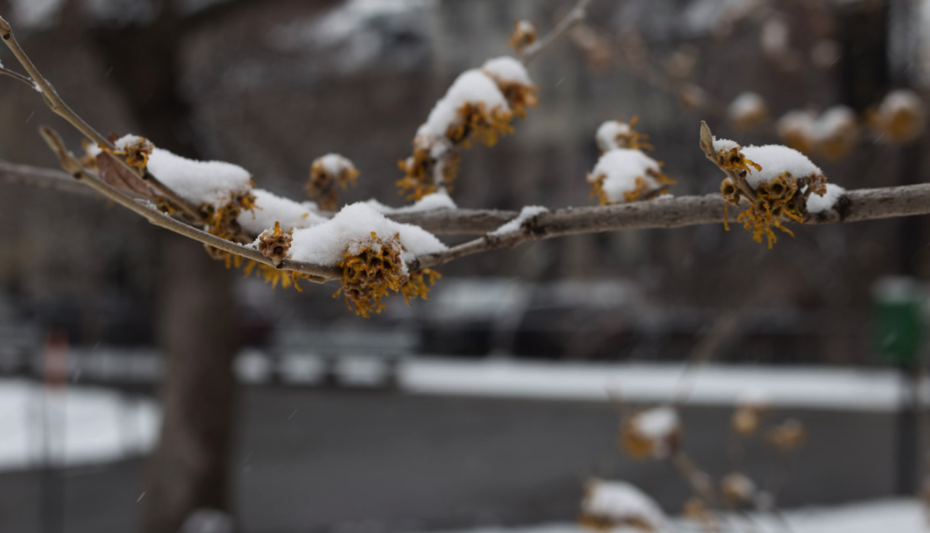Witch hazel
Hamamelis virginiana
The first bright sign of spring in the Public Garden every year, already out now! The witch hazel blooms as early as February, making it a must-have for a four-season landscape with numerous trees along the Garden borders. The yellow flowers have a warm, spicy fragrance. These blooms precede the leaves, and have fringe-like petals that look like small strips of paper from a shredder. It is popular when forcing flowers inside, as a first sign of spring.
Witch hazel is a deciduous small tree or large shrub with attractive foliage in all growing seasons with bright green leaves in spring followed by yellow- to yellowish-orange in autumn. Sometimes it is referred to as a tree because, if left unpruned, they will grow to be quite tall. The tree has fantastic fall attributes with yellow, fragrant flowers that bloom from October through December.
The wild plant is native to North America. The extract witch hazel is distilled from the bark of young stems and roots. Traditionally, extract of witch hazel was used extensively by native North American people for medicinal purposes such as treatment for tumors and eye inflammations. It was used internally for bleeding, and has many other uses including treatment of burns, cancers, tuberculosis, hemorrhoids, colds, and fever. Preparations are used on the skin for treatment of itching and inflammation, as well as in preparations for eye irritation. European settlers in the New World used the branches of witch hazel trees as divining rods for dowsing.
The next time you are in the Garden, or driving past, take a moment to thank this early bloomer for brightening up our wintery days!


